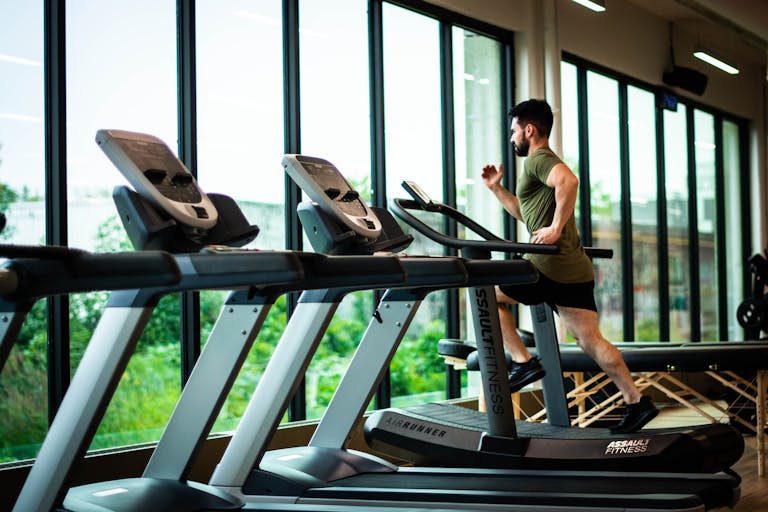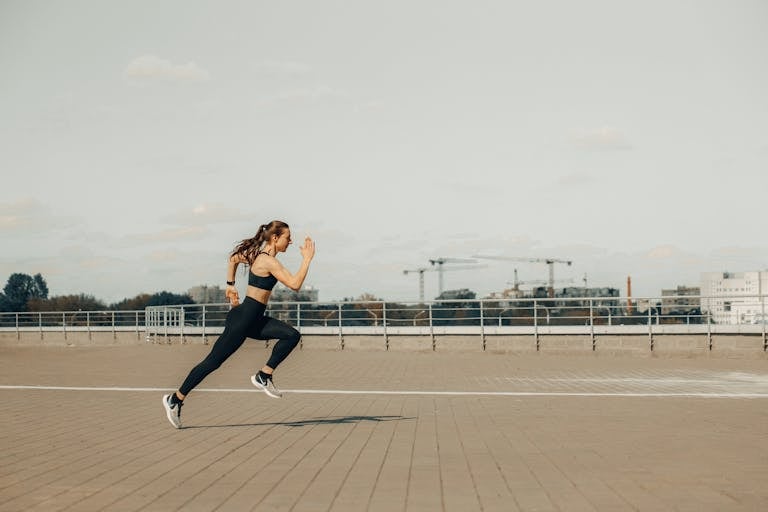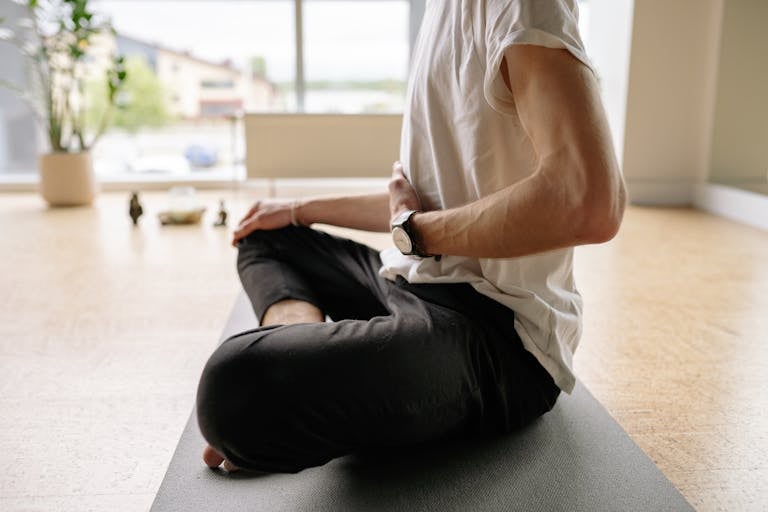Did you know controlled breathing can lower cortisol by 25% in 5 minutes? This simple yet powerful tool has caught the attention of elite athletes, busy professionals, and wellness enthusiasts who have found that the key to recovery and peak performance might be as close as their next breath.
Breathwork has evolved from ancient meditation to a science-backed approach to optimizing physical recovery and mental performance. Whether recovering from intense workouts, managing daily stress, or improving focus during challenging tasks, specific breathing techniques can change how your body and mind respond to pressure.
This guide will explore practical breathing methods, such as diaphragmatic and nasal breathing, that you can use immediately to recover faster, reduce stress, and boost physical and mental performance. These techniques have many benefits for your physical and mental health. By the end, you’ll know how to use your breath as a tool for overall well-being.
What is Breathwork and Why Does it Matter?
Breathwork is intentional breathing exercises that affect one’s physical, mental, and emotional state. Unlike automatic breathing, these controlled techniques engage specific responses in one’s nervous system, particularly the parasympathetic system, which is responsible for rest and recovery.
The science behind breathwork is how controlled breathing patterns affect the autonomic nervous system. When you breathe slowly and deeply, you signal your body to shift from a stressed state into recovery mode. This reduces cortisol production, lowers heart rate, and improves oxygen delivery to your muscles and brain. Breathwork can also maintain or enhance oxygen levels, which are essential for overall health and optimal bodily function.
Athletes use breathwork to stay calm during competition and recover between training sessions. Busy professionals incorporate these techniques to manage stress and focus during long workdays. Mindfulness practitioners use breath control as a foundation for meditation and emotional regulation.
Benefits of Breathwork for Recovery and Performance
Physical Recovery Benefits
Controlled breathing affects your body’s ability to recover after physical exertion. Deep intentional breathing improves oxygen flow to fatigued muscles and clears out metabolic waste products like lactic acid that build up during exercise. Using your lungs to their full capacity maximizes oxygen intake and supports faster recovery.
Proper breathing techniques after your workout accelerate the transition from sympathetic nervous system activation (fight-or-flight) to parasympathetic dominance (rest-and-digest). This reduces cortisol levels and releases growth hormone essential for muscle repair and adaptation.
Research shows that athletes who practice breathing exercises recover faster from exercise, have reduced muscle tension, and sleep better—all important for optimal physical recovery.
Mental Performance Benefits
Breathwork is a natural stress management tool that improves cognitive function. Controlled breathing reduces anxiety by activating the vagus nerve, which tells your brain to calm down and focus.
Proper breathing techniques help you stay mentally clear and make decisions in high-pressure situations. Many competitive athletes use specific breathing patterns before big moments to keep calm and perform at their best.
Studies show that regular breathwork improves attention span, working memory, and emotional regulation—benefits that extend beyond athletic performance into daily professional and personal life.
Diaphragmatic Breathing Explained
Diaphragmatic or belly breathing engages your diaphragm muscle instead of shallow chest breathing. This technique involves the abdomen and abdominal muscles, which support the diaphragm and enhance the effectiveness of each breath. This maximizes oxygen intake while promoting relaxation and recovery.
Most people breathe using their chest muscles, creating tension and limiting oxygen capacity. Diaphragmatic breathing allows your lungs to expand fully, and the stomach’s movement as it rises and falls is a key indicator that you are using the correct technique. This delivers more oxygen per breath and activates your parasympathetic nervous system.
Step-by-Step Guide to Diaphragmatic Breathing
- Sit comfortably: Sit in a chair with your back straight or lie on a flat surface.
- Relax your neck: To support proper breathing, keep your neck, shoulders, and head relaxed throughout the exercise.
- Place your hands: Put one hand on your chest and the other on your belly below your ribcage.
- Breathe through your nose: Inhale slowly and deeply, focusing on your belly rather than your chest.
- Check your hand placement: The hand on your belly should rise significantly while the hand on your chest moves minimally.
- Exhale slowly: Release the air through pursed lips and allow your belly to fall naturally.
- Practice the rhythm: Aim for 6-8 breaths per minute, with each exhale slightly longer than each inhale.
This technique is particularly effective for post-workout recovery because it quickly shifts the nervous system into repair mode, reduces muscle tension, and promotes faster healing.
Breathing Technique for Stress Relief
When stress and anxiety build, your breath can be your most powerful tool for calm. Diaphragmatic breathing, or belly breathing, is a simple yet effective technique for calming your body and lowering blood pressure.
To start, sit in a chair with your knees bent and back straight or lie on a flat surface with your knees bent and feet flat on the floor. Place one hand on your belly and the other on your chest. Inhale slowly through your nose, letting your belly rise as your diaphragm descends – your chest should not move.
Then exhale gently through your mouth, feeling your belly fall as your diaphragm rises. Focus on taking deep breaths and moving at a slow pace. Practice this for a few minutes to reduce stress, ease anxiety, and support overall mental well-being. Make belly breathing a part of your daily routine to keep your body and mind balanced and relaxed.
Nasal Breathing for Peak Performance
Nasal breathing is inhaling and exhaling through your nose only, not your mouth. Nose breathing, including alternate nose breathing, is used for stress relief and relaxation. This simple switch has big advantages for sustained energy and performance optimization.
Your nose acts as a natural air filter, warming and humidifying incoming air and producing nitric oxide – a compound that improves oxygen uptake and blood flow. Mouth breathing bypasses these benefits and can lead to faster fatigue and reduced performance.
Athletes who practice nasal breathing during training report improved endurance, better oxygen utilization, and faster recovery between intense intervals. This technique maintains optimal blood carbon dioxide levels and improves muscle oxygen delivery.
How to Nasal Breathe
Start by practicing nasal breathing during low-intensity activities like walking or gentle yoga. Focus on keeping your mouth closed and breathing rhythmically through your nose. If you feel breathless, slow down rather than switch to mouth breathing.
During workouts, try the “talk test” with nasal breathing—you should be able to nasal breathe during moderate-intensity exercise. If you have to open your mouth, reduce your intensity until you can return to nose-only breathing.F or daily practice, pay attention to your breathing throughout the day. Many people mouth breathe when concentrating or stressed. Consciously switching to nasal breathing helps you stay calm and focused.
As you get more comfortable, increase the duration of your nasal breathing practice to get more benefits.
Breathing and Risk Factors
Certain risk factors can make breathing harder and increase the likelihood of respiratory issues.
- Conditions like COPD and asthma can cause shortness of breath and make it harder for your lungs to get enough air.
- Being overweight or obese can put extra pressure on your diaphragm and lungs, making each breath feel like more work.
- Smoking and air pollution can damage your lungs over time and increase your risk of breathing problems.
- Even stress and anxiety can affect your breathing, often resulting in rapid shallow breaths that don’t engage your diaphragm fully.
Addressing these risk factors and practicing healthy breathing are key to supporting lung health. Techniques like diaphragmatic and pursed lip breathing can improve lung function, reduce shortness of breath, and overall health. Make these techniques part of your daily practice; your body will breathe easier and feel better.
Breathing Challenges
If you’re facing breathing challenges, know that improvement is possible with the right approach and consistent practice. Working with a healthcare professional can help you develop a personalized plan, especially if you have COPD or asthma.
Incorporating exercises like diaphragmatic and pursed lip breathing into your daily routine can make a big difference in how your body uses air. These exercises strengthen your diaphragm and allow you to breathe more air with less effort.
Managing anxiety and stress through relaxation techniques like meditation or yoga can also help prevent breathing difficulties from becoming overwhelming. Simple lifestyle changes—like staying hydrated, wearing loose clothing, and maintaining a healthy weight—can further support lung function. With patience and practice, you can overcome many breathing challenges and feel better overall.
Breathing Mistakes
Many people develop habits that make breathing less efficient and more stressful for the body. One of the most common mistakes is mouth breathing which can dry out your mouth, increase your risk of respiratory problems and reduce the quality of air entering your lungs. Instead, focus on nasal breathing, which filters, warms, and humidifies the air, making each breath healthier. Another common mistake is breathing too shallowly or rapidly from the upper chest. This can create tension in your neck and shoulders and prevent your body from getting enough oxygen.
To avoid this practice, take deep, slow breaths using your diaphragm – feel your belly rise and fall with each breath. By keeping your mouth closed, relaxing your shoulders, and focusing on abdominal breathing, you can relax, reduce stress, and help your body function at its best.
Advanced Breathing Techniques
Once you’ve mastered the basics, advanced breathing techniques can help you further enhance your breathing practice and overall well-being. Alternate nostril breathing is a calming exercise in which you close one nostril and inhale through the other, then switch sides to exhale. This technique balances your breath and can promote deep relaxation.
Box breathing is another powerful method: inhale for a count of four, hold your breath for four, exhale for four, and hold your breath again for four. This rhythmic pattern can sharpen your focus and calm your mind.
You can practice these breathing exercises while sitting in a chair, standing, or even during daily activities to improve your posture and reduce stress on your body. By gradually increasing your practice time and consistency, you’ll get the full benefits of these advanced techniques—greater relaxation, improved concentration, and a stronger, healthier breath.
Breathing into Your Daily Routine
A structured approach to breathwork ensures you get the most out of these techniques. Try this simple schedule for different times and situations:
Morning Foundation (5 minutes): Start your day with diaphragmatic breathing to activate your parasympathetic nervous system and set a calm, focused tone.
Mid-Day Reset (2-3 minutes): Use nasal breathing exercises during work breaks to manage stress and stay focused during challenging tasks.
Post-Workout Recovery (5-10 minutes): Practice diaphragmatic breathing immediately after exercise to speed up recovery and reduce muscle tension.
Evening Wind-Down (5-10 minutes): End your day with slow, deep breathing to improve sleep quality and prepare your body for overnight recovery. Use these techniques in real life for maximum effect. During stressful meetings, breathe nasally to stay calm. After intense training sessions, breathe diaphragmatically before stretching. Take a quick breathing break to regain perspective and focus when feeling overwhelmed.
Better Breathing = Better Health
Breathwork techniques like diaphragmatic and nasal breathing are scientifically proven ways to recover, reduce stress, and improve physical and mental performance. These simple practices activate your body’s natural healing mechanisms and give you tools to better manage daily challenges.
The beauty of breathwork is its accessibility – you can practice these techniques anywhere, anytime, without special equipment or extensive training. Regular practice builds a foundation of resilience that supports your whole wellness journey.
Take control of your breath to optimise your health and performance. Start with 5 minutes of diaphragmatic breathing today and then add nasal breathing into your daily activities and workouts.
Explore our wellness resources and join a community of people transforming their health through evidence-based practices. Your journey to better breathing and stronger living starts with your next breath.
Medical Disclaimer:
This content is for informational purposes only and is not intended as medical advice, diagnosis, or treatment. Always consult with a qualified healthcare professional before making any changes to your diet, exercise, or health routine. Never disregard professional medical advice or delay seeking it because of something you have read on this site.







